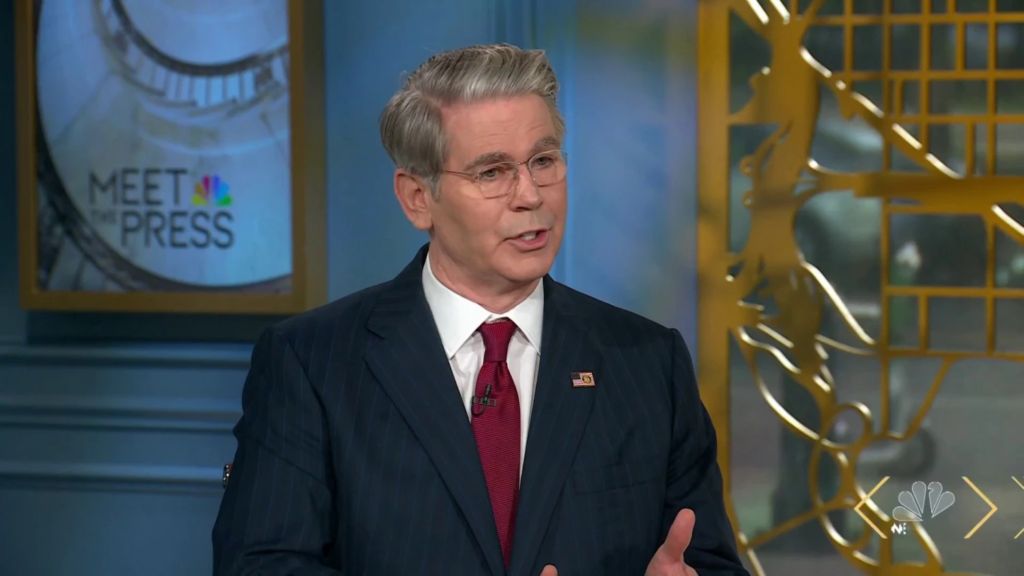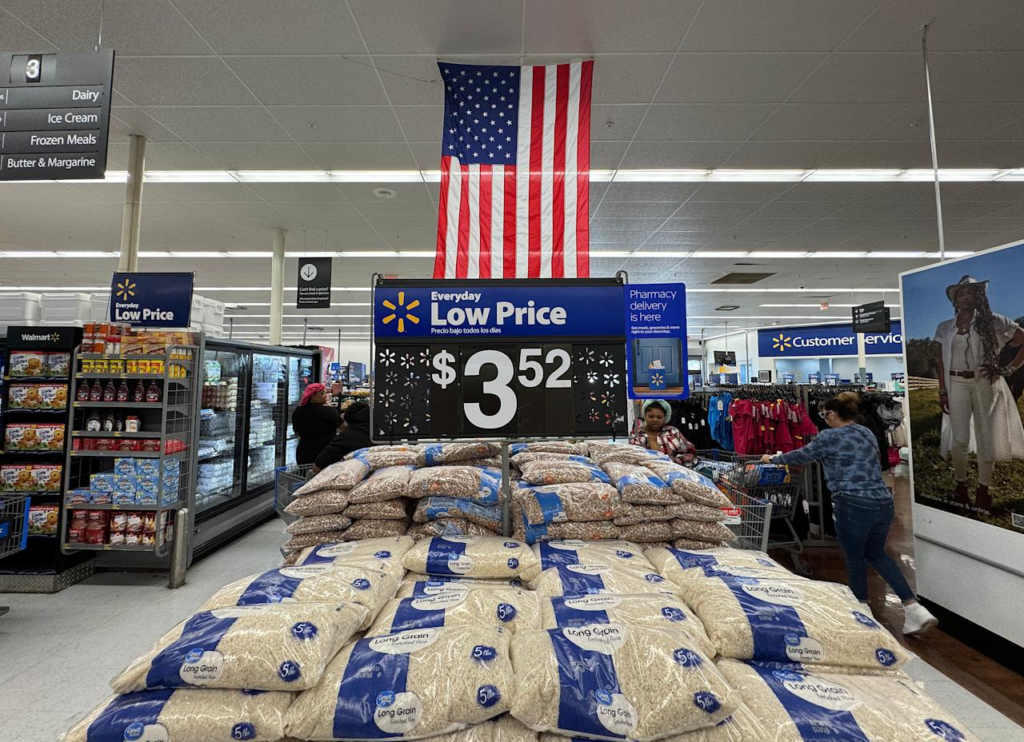In recent weeks, Walmart, America’s largest retailer, has found itself at the center of a heated discussion about potential price increases driven by proposed tariffs. The conversation intensified after Treasury Secretary Scott Bessent described Walmart’s warnings of price hikes as a “worst-case scenario” for consumers. As shoppers brace for possible changes at the checkout, the situation raises questions about how tariffs could affect everyday Americans, what Walmart might do to navigate these challenges, and what it all means for the economy. Let’s dive into the story, exploring the pressures Walmart faces, the role of tariffs, and the human impact of these developments.

The Tariff Talk: Why Prices Might Rise
Tariffs, essentially taxes on imported goods, have been a hot topic since President Donald Trump signaled plans to impose new ones, particularly on goods from countries like China. Walmart, which relies heavily on imported products for its shelves, warned that these tariffs could lead to higher costs for the company. In turn, those costs might be passed on to customers in the form of price increases. During a recent earnings call, Walmart’s leadership expressed concern, with a spokesperson noting that “significantly increased tariffs could lead to increased costs for our customers.” This statement sent ripples through the media and sparked a public debate about affordability.
For the average shopper, this news hits hard. Walmart is known for its low prices, a lifeline for millions of families on tight budgets. From groceries to clothing to electronics, the retailer’s ability to keep costs down has made it a go-to for consumers across the country. But tariffs could disrupt this model, forcing Walmart to make tough choices: absorb the extra costs, pass them on to customers, or find a middle ground.
Bessent’s Take: Downplaying the Impact
Treasury Secretary Scott Bessent stepped into the conversation on May 18, 2025, aiming to ease concerns. In interviews on Sunday morning talk shows, he described Walmart’s warnings as a “worst-case scenario,” suggesting that price hikes might not be as severe as feared. Bessent revealed he spoke with Walmart CEO Doug McMillon, emphasizing that the retailer was legally required to highlight potential risks during earnings calls to avoid lawsuits. “Walmart will be absorbing some of the tariffs, some may get passed on to consumers,” Bessent said, according to reports from Yahoo Finance and The Associated Press.

Bessent also pointed to falling gasoline prices—averaging around $3.18 per gallon, down from last year—as a factor that could offset any tariff-related price increases for Walmart shoppers. His message was clear: while tariffs might cause some changes, the broader economic picture, including lower fuel costs, could soften the blow for consumers. Still, his comments didn’t fully reassure everyone, especially as uncertainty looms over how much of the tariff costs Walmart will absorb.
Trump’s Response: “Eat the Tariffs”
Adding fuel to the fire, President Trump weighed in on May 17, 2025, urging Walmart to “eat the tariffs” rather than raise prices. In a post on Truth Social, he wrote, “Between Walmart and China, they should, as is said, ‘EAT THE TARIFFS,’ and not charge valued customers ANYTHING. I’ll be watching, and so will your customers!!!” His blunt directive put additional pressure on Walmart, framing the retailer as responsible for keeping prices steady despite the economic challenges posed by tariffs.
Trump’s comments reflect a broader expectation that companies like Walmart should shield consumers from the fallout of trade policies. However, this is easier said than done. Walmart operates on thin profit margins, and absorbing significant tariff costs could strain its finances. The retailer’s leadership has yet to respond directly to Trump’s remarks, leaving observers wondering how the company will balance these demands with its commitment to affordability.

What This Means for Shoppers
For everyday Americans, the possibility of price increases at Walmart is more than just a news headline—it’s a personal concern. Many families rely on the retailer for essentials, and even small price hikes could stretch budgets thin. For example, a modest increase in the cost of groceries, clothing, or household goods could add up quickly for households already grappling with the lingering effects of inflation.
Shoppers are understandably worried. Social media platforms like X have buzzed with reactions, with some users expressing frustration over the potential for higher prices. One post from November 2024 captured the sentiment: “Walmart is preparing to raise prices if Trump delivers on his tariffs promises. This is what they voted for.” While these posts reflect public sentiment, they also highlight the uncertainty surrounding the issue. Will prices skyrocket, or will Walmart find ways to minimize the impact?
Walmart’s Options: Absorb, Pass, or Pivot
Walmart faces a complex decision as it navigates this tariff-driven challenge. The company has several options, each with its own risks and rewards:
- Absorb the Costs: Walmart could choose to swallow some or all of the tariff costs to keep prices low. This approach would align with its brand promise of affordability but could squeeze profit margins and impact its financial performance.
- Pass Costs to Consumers: Raising prices is another option, though it risks alienating customers who expect Walmart to remain a budget-friendly retailer. Even small increases could drive some shoppers to competitors.
- Rethink the Supply Chain: Walmart could explore sourcing more products domestically or from countries not affected by tariffs. However, this shift would take time and significant investment, as global supply chains are deeply entrenched.
- Negotiate with Suppliers: The retailer might pressure suppliers to lower costs or share the tariff burden, though this could strain relationships with key partners.
Walmart has signaled it’s exploring all possibilities. “We never want to raise prices,” the company’s CFO said in November 2024, adding that “there probably will be cases where prices will go up for consumers.” This cautious approach suggests Walmart is trying to strike a balance, but the outcome remains uncertain.
The Bigger Picture: Tariffs and the Economy
The Walmart tariff saga is part of a larger story about trade policy and its ripple effects. Tariffs are designed to protect domestic industries and encourage local manufacturing, but they often come with trade-offs. Higher costs for imported goods can lead to inflation, hitting consumers and businesses alike. Small businesses, in particular, are feeling the pinch, as Bessent noted that concerns about tariffs likely stem from higher rates previously imposed on China.
At the same time, tariffs could spur long-term changes, such as increased investment in American manufacturing. For Walmart, this might mean sourcing more products locally in the future, a move that could create jobs but also require significant adjustments to its business model. For now, though, the focus is on the immediate impact—how much will prices rise, and how will consumers cope?
Looking Ahead: What’s Next for Walmart and Shoppers
As the tariff debate unfolds, all eyes are on Walmart. The retailer’s next moves will shape not only its own future but also the shopping experience for millions of Americans. Will it manage to keep prices low, as Trump demanded, or will consumers face higher costs at the register? Bessent’s reassurance that price hikes are a “worst-case scenario” offers some hope, but the uncertainty is palpable.
For shoppers, the best approach is to stay informed and plan ahead. Keeping an eye on Walmart’s announcements and comparing prices with other retailers could help mitigate the impact of any increases. Meanwhile, policymakers, retailers, and consumers alike will need to navigate the delicate balance between trade goals and economic stability.
In the end, this story is about more than just tariffs or price tags—it’s about the people who shop at Walmart every day, hoping to stretch their dollars a little further. As the situation evolves, one thing is clear: the conversation about affordability, trade, and the cost of living is far from over.
Must Read :- Jayden Daniels Shines as a Potential Star for 2028 Olympic Flag Football





